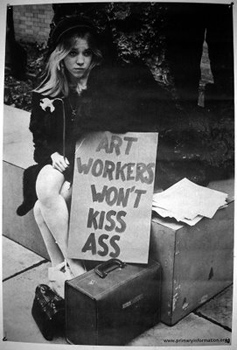
Steamfitter (1920) by Lewis Hine.
As we celebrate the contributions of the American worker to the strength, well-being, and prosperity of the country this Labor Day, we are reminded that artists make a significant contribution. As we reported last February, the economic data shows that taxable revenue from the state’s arts-and-culture industry has grown by 15.5% over the past decade. In 2017, the industry generated $5.59 billion, which resulted in nearly $350 million in tax revenue. Houston and Dallas each generated nearly $1 billion or more in arts revenue, and Austin and San Antonio each generated more than $350 million.
Yet, with a few exceptions, most Texas artists are part-time adjunct professors working long hours without health insurance or other benefits, and scurrying from one campus to the next for an average of $2,700 per three-credit course (2018), according to the Houston Chronicle.
The toll of COVID-19 over the past few months has had an unprecedented impact on artists and art organizations alike. Artists are seeing their funding opportunities shrink, job opportunities evaporate, and finding themselves having to work multiple jobs (as usual) to make ends meet.
There have been numerous crisis relief grants, from Anonymous Was A Woman, to the Artist Relief Fund, to initiatives in Houston, Dallas, Austin and elsewhere in the state. However, most of these funding sources have been depleted by now, and as the U.S. Congress debates a second round of economic stimulus funding for individuals, artists and arts organization face a steep climb back to pre-COVID “Normal.”
 When the new normal, post-Covid world arrives, we hope it will bring with it stronger institutions and a more resilient artist and art worker. We also hope that they will not only be celebrated, but also paid fair wages and be treated equally and equitably. W.A.G.E., an organization that strives to make sure that happens, has been advocating for artists since 2008.
When the new normal, post-Covid world arrives, we hope it will bring with it stronger institutions and a more resilient artist and art worker. We also hope that they will not only be celebrated, but also paid fair wages and be treated equally and equitably. W.A.G.E., an organization that strives to make sure that happens, has been advocating for artists since 2008.
To all the Texas artists out there working today, we celebrate you.



4 comments
I so appreciate Glasstire and its reporting of art news all over our state. I do question the premise put forth in this article that most Texas artists are part time adjunct professors. Do you have data behind that statement? My hunch is that most part time adjunct art professors are also working artists, which is significantly different from the way this idea was stated. But hunches don’t count, so again, where’s the data?
Your hunch is indeed correct, Laura. Most part-time art professors are also working artists, and as part-time workers have no significant benefits, which they deserve. We honor and support their efforts in driving across Texas to train young artists for little pay (which they deserve) and the Texas art scene is better off for their efforts. Thanks for reading Glasstire!
I very much hope that post-covid, and with real change meant to be more inclusive and equal for BIPOC and marginalized groups, the art world as it is completely dies. Like the article states, the art sector is a multibillion dollar industry, so there is 0 reason that makes sense for the people who create that industry to need other jobs. Everyone knows the value of art – there’s no shortage of people, cities, towns, neighborhoods, companies, non-profits, etc. who will seek out art to benefit them. Nobody seems to value the artist though, instead creating pay-to-play systems, and calls for art that if funded, fund barely enough or not enough for the artist to end up ahead at the end of it (though I will say Houston does a good job of public art calls being enough to support an artist. A welcome exception). Artists are no less deserving of making enough money to get health coverage, and occasionally affording a vacation like everyone else. The exploitation of artists must end.
Well stated and couldn’t agree more. I believe a great example would be the applicants entry fee. Liquidating an Artist’s resources, whether that be considered “nominal” to those offering the opportunity within the current “Pay to Play” methodology, dismisses the levity that most Artists struggle within that system from the get go financially. Further pressing upon a respectful approach to providing the denied Artist with a bit more attention than a copy paste “we’re sorry to inform you due to a high turn out this year” reply. Monies to cover the cost of the committee, overhead, etc. should already be tended to with the budget being advertised as “available”. This “pay to play” approach disregards valuing the Artist and their efforts to contribute their life to the Arts, and furthermore, to the multibillion dollar industry. System starts with the Artist, without them, there is nothing to sell (for majority profit) by the middle man/woman, etc. organization. Respect is a two way street and Artists need to come together to uphold personal integrity across the board, valuing their ability in creating magic within the realms of a system that has notoriously taken advantage of the vast opportunities Artists provide, influencing our culture and connection with others.